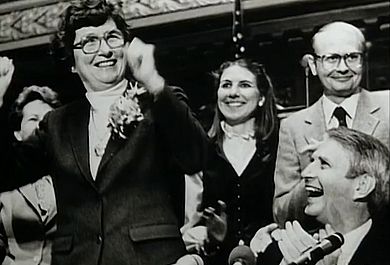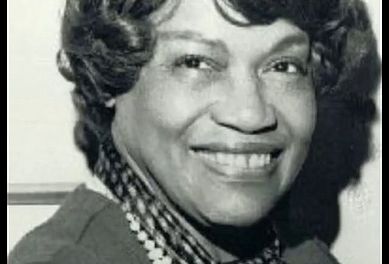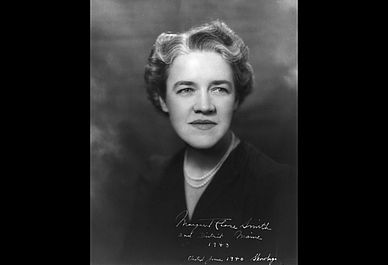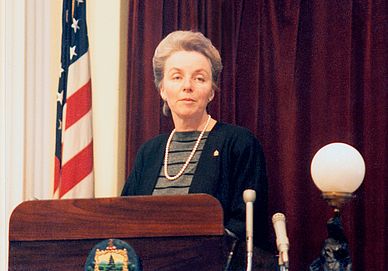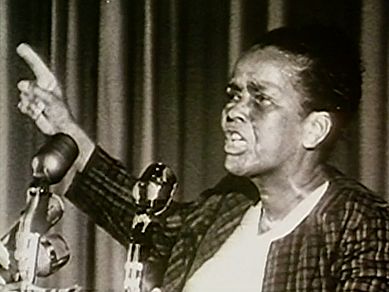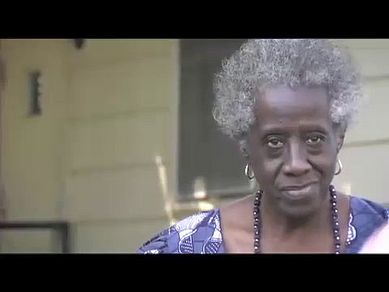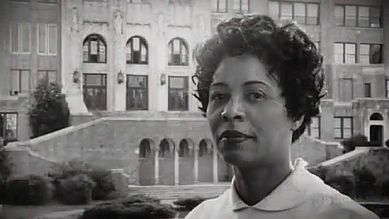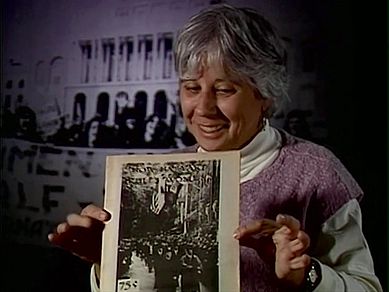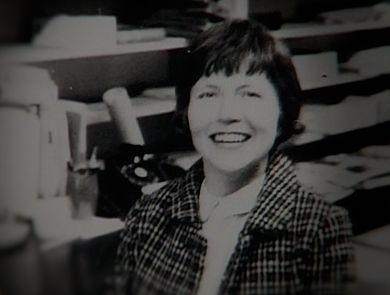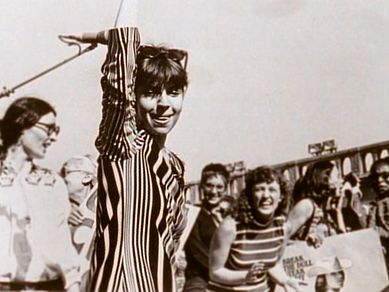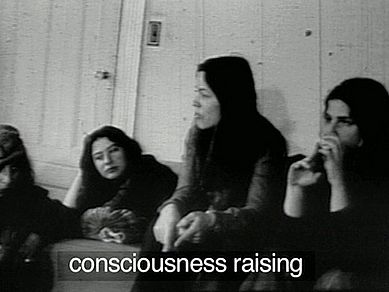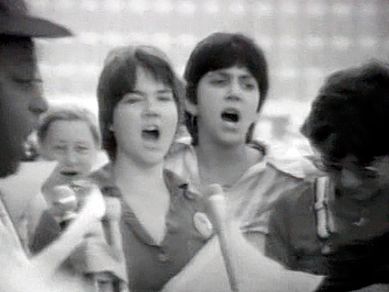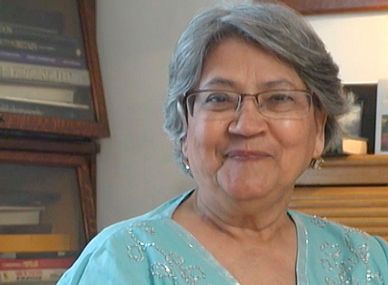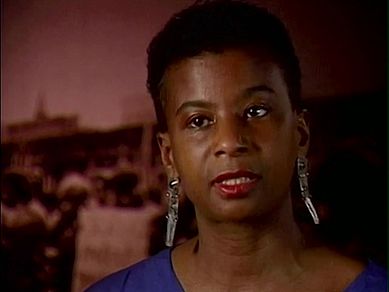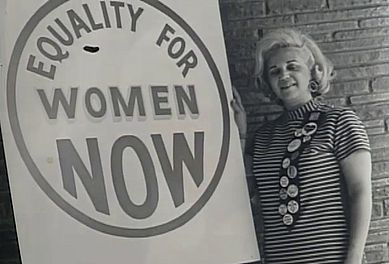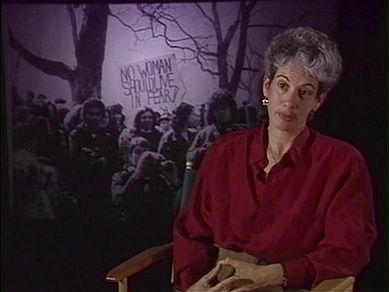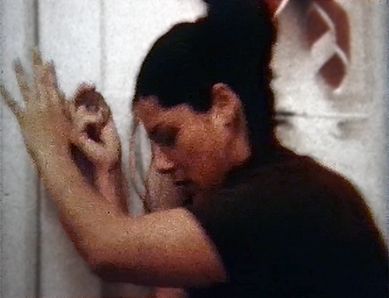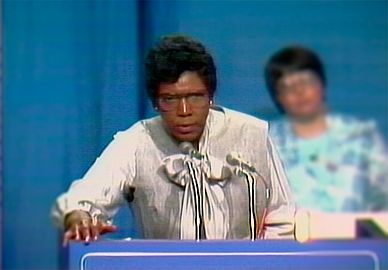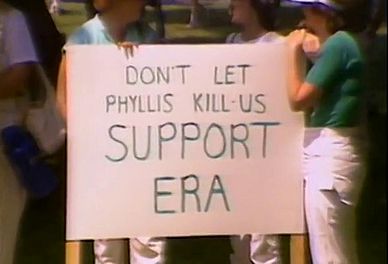Resource Library
Film Clips: Politics and Social Movements
Wisconsin’s Marital Property Reform Act was the first in the nation — thanks to Mary Lou Munts, the political powerhouse who made it happen.
Excerpt from “Step by Step: Building a Feminist Movement 1941-1977,” a film by Joyce Follet. (Running time 6:18) Used with permission. The complete film is available from Women Make Movies.
What words drove Erma Henderson to become the most powerful woman of her time in Michigan politics?
Excerpt from “Passing the Torch,” a film by Carol King. (Running time 3:36) Used with permission. The complete film is available from King Rose Archives. For more information, visit Veteran Feminists of America.
What year was Margaret Chase Smith nominated by a national party as the first woman in the United States to run for the presidency?
Excerpt from “The Life of Senator Margaret Chase Smith.” (Running time 5:52) Used with permission. The complete film is available from the Margaret Chase Smith Foundation.
How is former Vermont Governor Madeleine Kunin continuing to help women enter politics?
Excerpt from “Madeleine May Kunin: Political Pioneer,” a film by Catherine E. C. Hughes. (Running time 4:15) Used with permission. Film clip edited by Catherine Hughes. The complete film is available from Vermont PBS. Photo courtesy of the Vermont State Archives and Records Administration.
Why is Ella Baker called the mother of the civil rights movement?
Excerpt from “Fundi,” a film by Joanne Grant. (Running time 11:31) Used with permission. The complete film is available from Icarus Films. Visit the Ella Baker Center for more resources.
Follow her journey: Mississippi sharecropper, voting rights activist, international diplomat.
Trailer for “Who is Unita Blackwell?” a film by Aaron Lehmann. (Running time 1:40) Used with permission. The complete film is available from Lehmann Film Productions.
Why was Little Rock Central High School the focal point of national controversy in 1957?
Trailer for “Daisy Bates: First Lady of Little Rock,” a film by Sharon La Cruise. (Running time 1:08) Used with permission. The complete film is available from Sakkara Films. For more information, visit PBS and ITVS.
What was Rita Arditti’s path to becoming a feminist activist?
Excerpt from “A Moment in Her Story: Stories from the Boston Women's Movement,” a film by Catherine Russo. (Running time 2:28) Used with permission. The complete film is available from Catherine Russo Documentaries.
How did Arvonne Fraser create a feminist underground in Washington, D.C.?
Excerpt from “Step by Step: Building a Feminist Movement 1941-1977,” a film by Joyce Follet. (Running time 5:36) Used with permission. The complete film is available from Women Make Movies.
Women are human beings — is this a radical idea?
Trailer for “She’s Beautiful When She’s Angry,” a film by Mary Dore. (Running time 2:42) Used with permission. To learn more, visit shesbeautifulwhenshesangry.com. The complete film is available from Cinema Guild.
Why did feminists protest against the Miss America pageant in 1968?
Excerpt from “Miss America,” a film by Lisa Ades. (Running time 2:49) Used with permission. The complete film is available from Women Make Movies.
How did consciousness-raising promote unity among feminists?
Excerpt from “A Moment in Her Story: Stories from the Boston Women's Movement,” a film by Catherine Russo. (Running time 1:13) Used with permission. The complete film is available from Catherine Russo Documentaries.
Liane Brandon recalls the revolutionary ideas discussed by the members of Bread and Roses collectives.
Excerpt from “A Moment in Her Story: Stories from the Boston Women's Movement,” a film by Catherine Russo. (Running time 2:22) Used with permission. The complete film is available from Catherine Russo Documentaries.
Music became part of feminist gatherings and demonstrations and inspired the participants just as it did in the civil rights movement.
Excerpt from “A Moment in Her Story: Stories from the Boston Women's Movement,” a film by Catherine Russo. (Running time 0:42) Used with permission. The complete film is available from Catherine Russo Documentaries.
How did resilience, persistence and forgiveness guide Martha Cotera on the road to Chicana feminism?
Excerpt from “A Crushing Love: Chicanas, Motherhood and Activism,” a film by Sylvia Morales. (Running time 6:45) Used with permission. The complete film is available from Women Make Movies.
Demita Frazier remembers how African-American feminists worked to establish a new and independent voice in the women’s movement.
Excerpt from “A Moment in Her Story: Stories from the Boston Women's Movement,” a film by Catherine Russo. (Running time 5:08) Used with permission. The complete film is available from Catherine Russo Documentaries.
How did Gene Boyer become a grassroots feminist activist in the small town of Beaver Dam, Wisconsin?
Excerpt from “Step by Step: Building a Feminist Movement 1941-1977,” a film by Joyce Follet. (Running time 10:16) Used with permission. The complete film is available from Women Make Movies.
What does Nancy Hawley ask us to remember about the early days of the women’s movement?
Excerpt from “A Moment in Her Story: Stories from the Boston Women's Movement,” a film by Catherine Russo. (Running time 0:40) Used with permission. The complete film is available from Catherine Russo Documentaries.
What courageous steps are women taking to confront domestic violence?
Excerpt from “Breaking the Rule of Thumb,” a film by Andrea K. Elovson. (Running time 6:11) Used with permission. The complete film is available from Women Make Movies.
Who speaks for American women? Two conferences held in Houston, Texas in 1977 offered strikingly different answers to this question.
Excerpt from “Sisters of ’77,” a film by Cynthia Salzman Mondell and Allen Mondell. (Running time 11:23) Used with permission. The complete film and discussion guide are available from Media Projects Inc.
What confronted Michigan feminists while they were working for the passage of the Equal Rights Amendment?
Excerpt from “Passing the Torch,” by Carol King. (Running time 4:50) Used with permission. The complete film is available from King Rose Archives. For more information, visit Veteran Feminists of America.
Activists around the world joined forces on V-Day to protest violence against women in 2013.
Video by Eve Ensler and One Billion Rising. (Running time 4:33) Used with permission.
How to Navigate our Interactive Timeline
You will find unique content in each chapter’s timeline.
Place the cursor over the timeline to scroll up and down within the timeline itself. If you place the cursor anywhere else on the page, you can scroll up and down in the whole page – but the timeline won’t scroll.
To see what’s in the timeline beyond the top or bottom of the window, use the white “dragger” located on the right edge of the timeline. (It looks like a small white disk with an up-arrow and a down-arrow attached to it.) If you click on the dragger, you can move the whole timeline up or down, so you can see more of it. If the dragger won’t move any further, then you’ve reached one end of the timeline.
Click on one of the timeline entries and it will display a short description of the subject. It may also include an image, a video, or a link to more information within our website or on another website.
Our timelines are also available in our Resource Library in non-interactive format.
Timeline Legend
Yellow bars mark entries that appear in every chapter
This icon indicates a book
This icon indicates a film
1971 The Click! Moment
The idea of the “Click! moment” was coined by Jane O’Reilly. “The women in the group looked at her, looked at each other, and ... click! A moment of truth. The shock of recognition. Instant sisterhood... Those clicks are coming faster and faster. They were nearly audible last summer, which was a very angry summer for American women. Not redneck-angry from screaming because we are so frustrated and unfulfilled-angry, but clicking-things-into-place-angry, because we have suddenly and shockingly perceived the basic disorder in what has been believed to be the natural order of things.” Article, “The Housewife's Moment of Truth,” published in the first issue of Ms. Magazine and in New York Magazine. Republished in The Girl I Left Behind, by Jane O'Reilly (Macmillan, 1980). Jane O'Reilly papers, Schlesinger Library.

